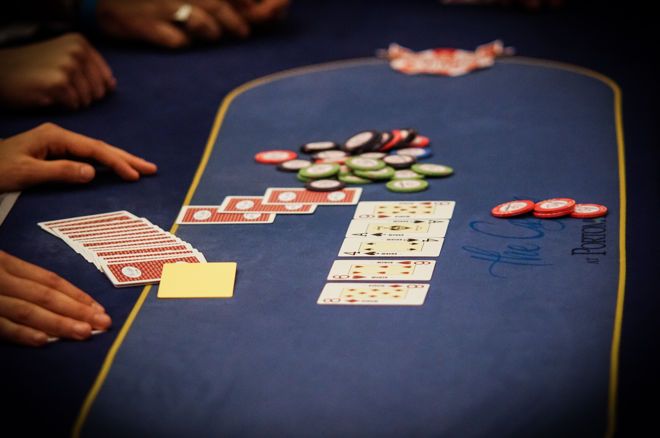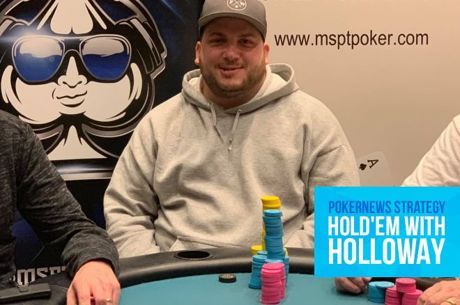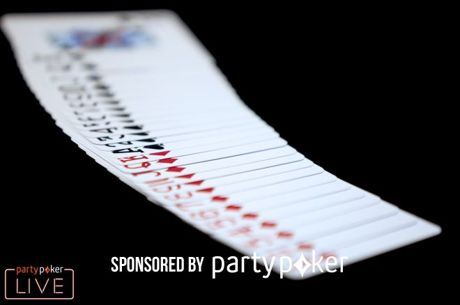Recognizing When Your Opponent Should Have It

Sometimes in poker a player will make a bet that a recreational player will struggle to identify as unlikely to be a bluff. But it happens �� actions your opponent takes in a hand can make it so unlikely the player is bluffing, you really should learn to recognize those spots and understand that you should let your inferior hand go.
The following hand demonstrates just such a situation, showing a player failing to perceive how the circumstances surrounding an opponent's bet strongly indicated the bet just couldn't be a bluff.
Keeping the Pot Small Through the Turn
It was a 100NL ($0.50/$1) online game, played six-handed, and the hand began with a short-stacked player raising to $2.50 from early position. Next to act was a regular with a huge stack who three-bet to $10. Because the short-stacked player was only playing $44 to start this hand and both players were in relatively early position, it stood to reason that the three-bet was unlikely to be a bluff.
Action folded to a recreational player on the button with about $100 to begin and he called the three-bet. It folded back to the short-stacked player who perhaps recognizing the strength being represented by both of his opponents decided to get out of the way and fold.
The two remaining players saw the flop come 8?2?7?, and with $24 (less rake) in the pot, both players checked.
The turn was the K? and this time the regular fired for $13. The player on the button called.
Before we go further, let's talk a bit about the button's range as it is being represented here.
The player on the button has shown he is trying to get to showdown cheaply, though with a strong hand. He just called a three-bet before the flop, but then checked behind on the flop. Then on a turn card that connects with ace-king, he neither raised nor folded, but just called.
It stands to reason the button has a pair that did not bet the flop �� say pocket nines, tens, or jacks �� or he connected with the king with a hand like ace-king or king-queen suited.
So the button is strong, but not strong enough to want to get all in. He doesn't need to bluff, and having had at least three opportunities (preflop, flop, and turn) has not attempted to do so.
Putting a Price on the Showdown
The river card was the 2?, pairing the board which when completed read 8?2?7?K?2?.
With the pot about $50 and with $76 remaining in the effective stacks, the regular moved all in. Let's consider what he could have.
Though a flush draw presented itself on the turn, that would be the only draw that the regular might hold. Also, it should be considered that on the flop, many hands with backdoor flush draws could have continuation bet as a bluff.
Hands like Q?J?, Q?J?, and Q?J? all would have two overcards, a backdoor flush draw, and a backdoor straight draw. Other hands like AxKx-suited (hearts, spades, or diamonds) would also have had strong overcards and backdoor flush draws.
Remember that short-stacked player at the beginning? If we cross-reference the hands that the regular would have wanted to stack off with versus that player's opening range with hands that could not bluff the flop versus the button's cold-call, we will get a small range, the only suited hands of which will be clubs (since the flop contained all of the other suits).
In other words, we have very strong evidence to believe that the player has unsuited high cards that did not connect with the flop. His opponent on the button, had he a pair worse than the king, could have, and should have, protected his hand with a flop bet against such a range.
What's Done Is Done
Compounding mistakes and missing opportunities is a cardinal sin in poker. But in a big bet game like no-limit hold'em, the sin can be especially punishing.
What unsuited high cards that did not want to bet the flop would then bet the turn and, having been called, move all in on this river, for 1.5 times the pot? There is only one hand, that famous one recreational players always worry about �� ace-king.
But this time, this recreational player did not worry enough. That's right �� the button called off the overbet shove with 9?9?. And sure enough, the regular who had shoved turned over A?K?. The river shove was not a bluff.
It is not that helpful to think an opponent is only representing one hand when in fact the player is representing seven combinations. There are six combos of ace-king offsuit given the K? on the board, plus the aforementioned A?K? that may not have bet the flop. And how many combinations would have three-bet in the first place against the short-stack? Not that many. Not that many that nines could even beat.
For the player on the button, he paid off on the river with his entire stack in a way as a belated response to having missed a flop bet when his hand was best.
Sometimes the king or the ace will come, and in situations such as this, one needs to make sure to get away. Stacking off with the worst of it affects a balance sheet that includes the instances pocket nines remains the best hand to the river.









